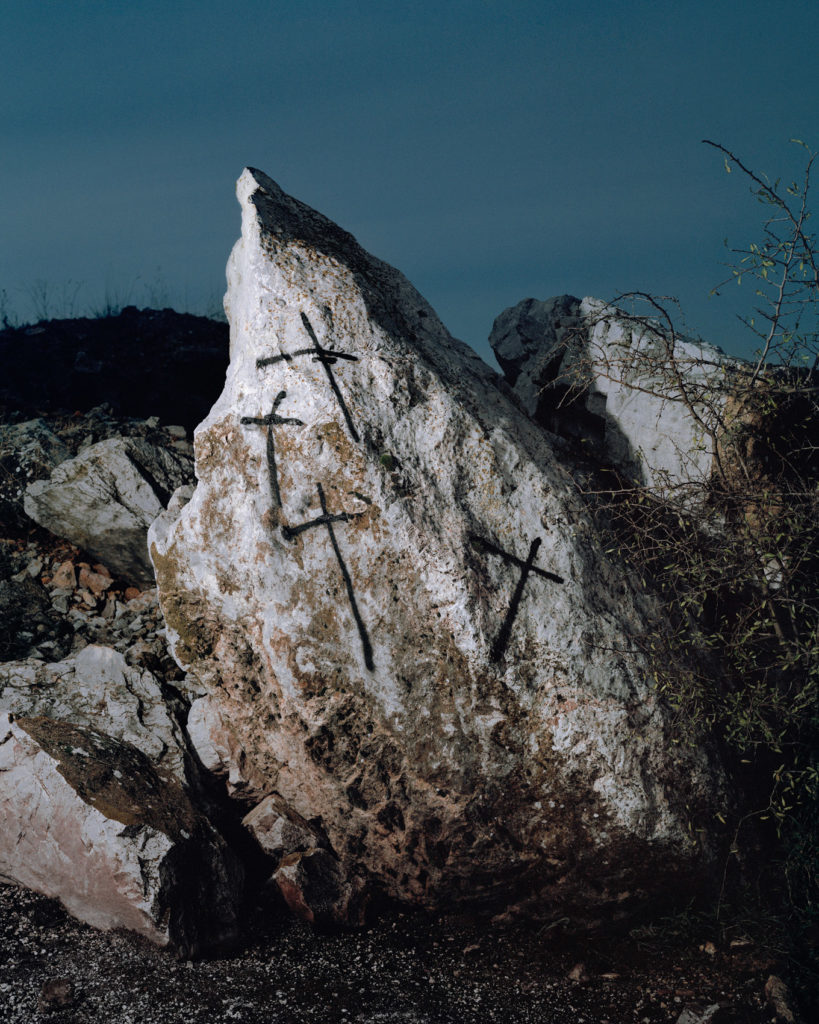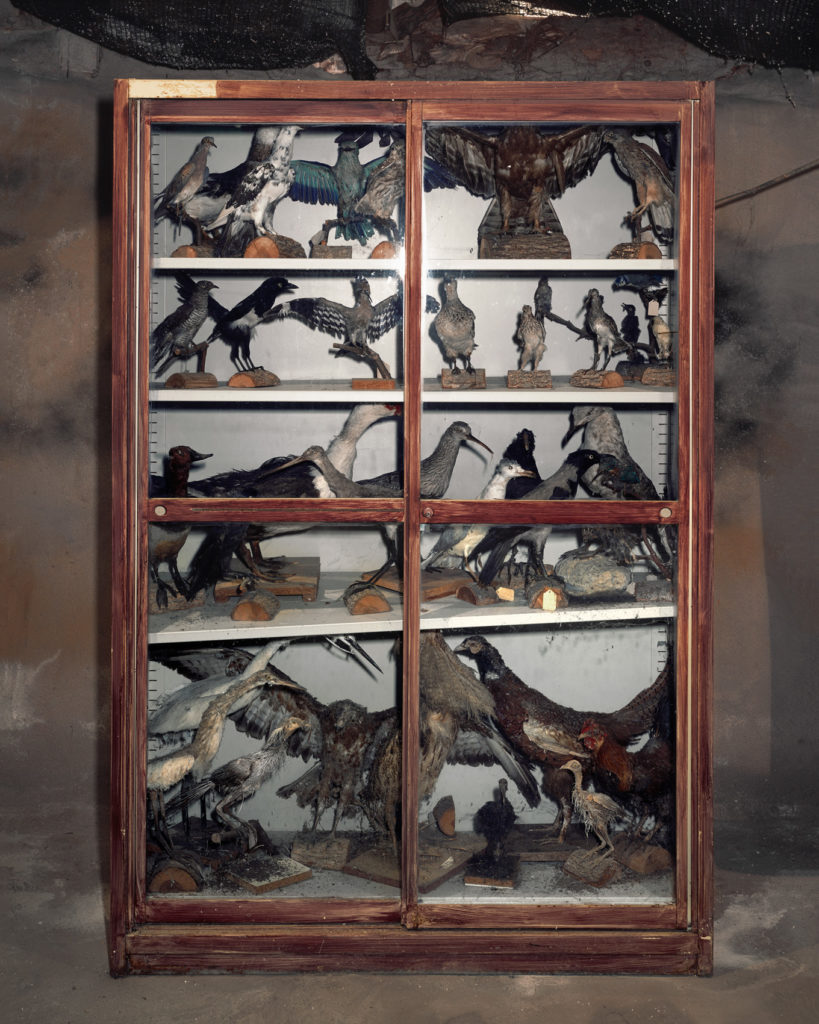Giannis Manolis is a Greek photographer who lives and works in Thessaloniki. In his first long term project, he engages with life in the suburban Greek landscape and constructs a subtle sequence of portraits, signs of culture, interior spaces, that have two qualities; the documentary and the personal commentary. The later is latent in his eurythmic compositions and contradicts the nature and thoughts of the artist about the modern life of various generations, far away (and vicariously close) to the modern metropolis. At the moment of the conversation, the photobook has secured 65% of its crowdfunding and will be published by Velvet Cell.
The stronger man’s relationship with nature, the weaker the presence of landscape in their conceptual universe, according to Simmel. In fact, Antiquity and the Middle Ages had no sense of landscape. What is your relationship with nature as a person living and working in an urban center? How did your wanderings in the suburban landscape outside of Thessaloniki begin?
I remember myself when I was a child, spending all summer months in my mother’s village. 9 houses, vast green areas and the plane tree in our garden are the first things that created my relationship with the landscape. I think that the feeling of exploration that I have possessed since I was a child and I discovered in my first contact with the landscape is what led me to photograph outside the city .. It definitely started without any specific idea of what I was looking for, what I wanted to tell but just as a way out from the repetitive urban images. I felt that this photography methodology gave me happiness and recreated my experiences as a child.
Is there any place in nature where you found yourself and felt that you were the first to step there;
During the years that I worked on this project I found many places that I could not even imagine that they could be so close to me. The truth is that I would more easily describe myself as an observer or a visitor in all these places. I like to be able to maintain a distance from the subjects I photograph .. Nevertheless if I have to answer if I felt this.. I think that the trips back to my home village have always made me feel like all these years since the day I lived my adventure as a child have not passed. As I previously said it was like a reconstruction of my experiences and the feeling of freedom I felt then.
There are several strong references to religious symbols and paradoxes associated with them in your narrative. How did this come about?
Trying to create a realistic narrative about modern suburban Greece in the post-crisis period, I considered it important to be able to speak, even conceptually, about the different imprints of a crisis wider than the economic one we know. I chose to use symbols and details that seem to be in a transitional state, often dystopian. They aim to present the different textures of the country that are in confusion… Collecting images that describe a society at all its levels. Speaking of Greece, one of the elements that I wanted to document was the part of religion, an element with a strong presence in the country and also in the social life of many of its people. Depicting it, however, in a transitional state corresponding to the dystopian landscapes which are presented in my story.


How did your collaboration with The Velvet Cell publishing house begin? It looks definitely as a conscious choice, considering their past publications.
As a fan of photobooks, it was a great goal for me to see this specific photography story printed in a book. Our collaboration with The Velvet Cell started by filling out the submission form talking about my work and by attaching some images. In all the information I filled in I remember there was a really important question for me : ”How do you imagine your photobook”. I remember that these 6 words in the right row gave me the impression that this is a publishing house that is interested in the way the photographer wants to present his/her work. Also their minimal graphic design, the space they give to the image to “speak” without being based on graphic exaggerations, in combination with the fact that their publications deal with the relationship between the city – the landscape and its social involvement with it ( elements that also occupied me in my own series of images) are the main elements that piqued my interest from the beginning.
Could you tell us a little about how the collaboration with Giannis came about? What was the first positive takeaway from your discussion?
Ricardo: A lot of the artists we publish get recommended by other artists we work with. Generally, though, we want to be accessible for everyone to get in touch and show us their great work. Therefore, we have a submission form on the website and in Gianni’s case, he had submitted his work to us. Once I have seen the images of the strange self build villa and the mattress floating in the water, I knew that we have to publish his work. There was no discussion needed anymore.
What components-factors did you take into account for the cover of the book and the choice of the colour palette in the inner part?
Ricardo¨: Blue and white for the cover is an obvious choice for a work that takes place in Greece. The photograph on the cover, also in his abstracted white form, reflects the general dark mood of Gianni’s work. The cover, therefore, includes the context of the work as well as his morbid feeling. The endpapers are in a vibrant orange. Which contrasts the blue, but also reflects one of the key images in the book — the burning field.

The process of funding a photobook through crowdfunding platforms has been in the spotlight in recent years. I’m thinking that on the one hand it’s kind of stressful, but on the other hand it’s so heartwarming to have so many people supporting an author’s work. How did you decide to take this route and how do you experience it?
As we all know, designing and creating a book is quite costly most of the times. When we designed the book with Ricardo we made some decisions that we considered important for the correct presentation of the project. The number of images, the way it will be printed and the first impression we want to create with the cover were some of the things we decided to suggest in the best possible way for us to present something as we both imagined. So I think that this financial perversion led us to try to raise production money through this funding campaign .. An important and stressful decision as you said but at the same time a big test of how much people will love our work.
Writing these questions and looking over and over again at your book, I wondered how strange a coincidence it is that the publication of this feature will be adjacent to Alexandra’s feature, whose name we see written in the acknowledgements, without it being planned. These unexpected encounters… How much of a role did they play in the creation of the images in this book and how did you manage them?
First of all, it is a great pleasure for me this interview to be next to the feature of my dear friend Alexandra. She and Kosmas Pavlidis are the people who supported this project more than anyone else with their presence in many trips but also with their presence in my daily life. I thank them more than anyone else. As for the part of the unexpected in the photographic process, I believe that it plays the same important role as the planning of a trip. A turn on a road you do not know, a stranger you find in front of you on a path that you follow, the light that finds a different path than usual to illuminate your subject are just a few of these surprises giving pictures to someone who holds a camera. I believe that no matter how well you plan a trip, you end up chasing everything that you do not know will be in front of you.
Road trips are almost always combined with music. Would you like to share with us an album that was played again and again on your road trips?
I love this question.. But it’s really tough to answer. City of the Sun is one of my favourite bands and their songs are strongly connected with my roadtrips. But as a person that combines music with memories. I’m gonna describe a short story for a song.. About 3 years ago my Friend and colleague, Vassilis, wrote an article for a movie in a festival. The closing song was Heroes from David Bowie.I remember he wrote that “ anything that ends with Bowie can not have gone wrong”. Since then I remember that song playing on repeat every time that city lights turns on and the sun goes down. The phrase “We can be Heroes just for one day” fills me with hope, dreams, motivation even if my bag has 20 plates or none…
So If I can answer this way I’m gonna say that I consider Everything from City of the sun as the soundtrack of my road trips and Heroes – David Bowie as the closing song.
More on his website













